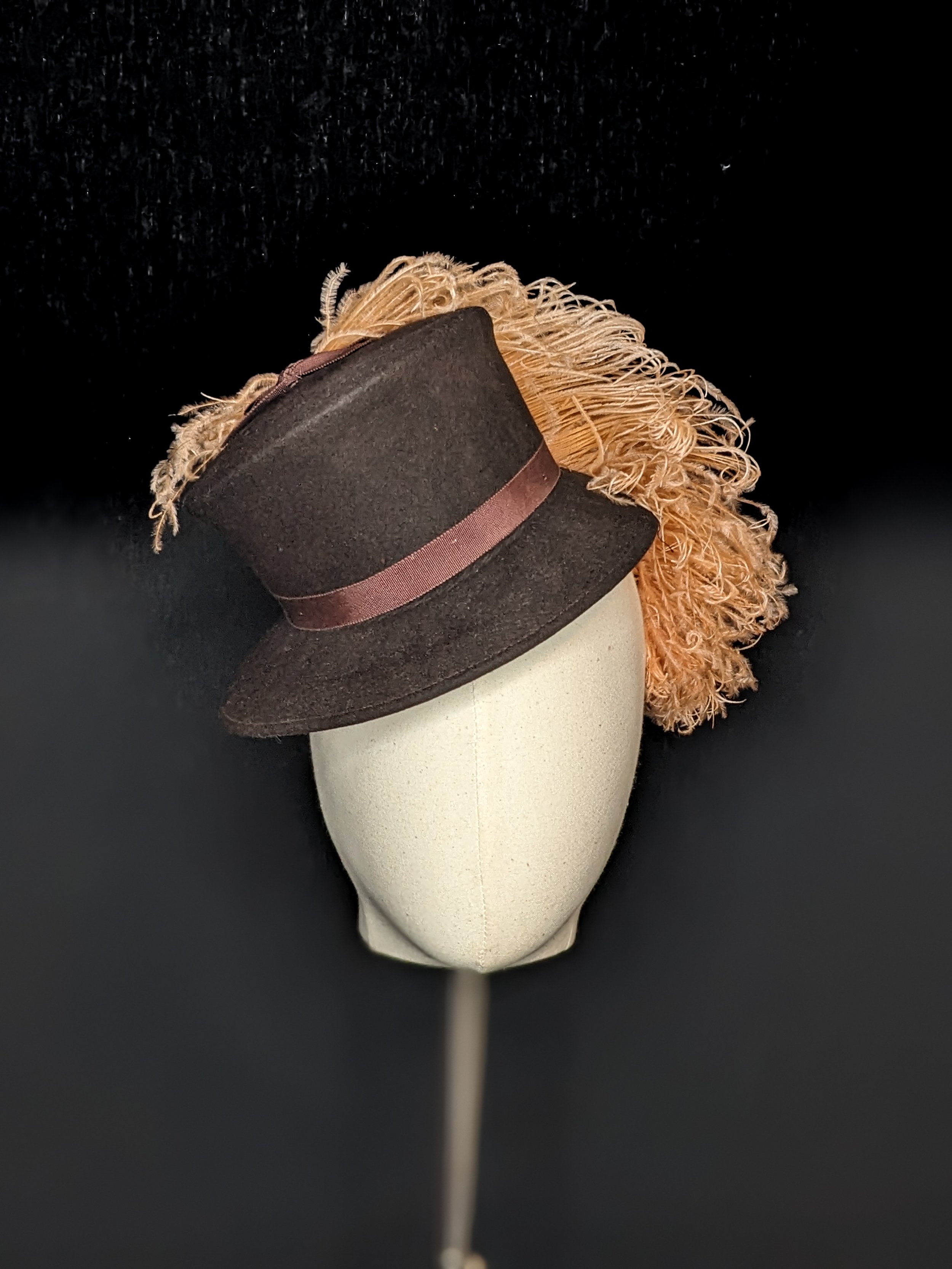Winter is here & a look at some vintage hats
At long last, thick clouds and cooler temperatures drape central Texas like a fluffy Winter coat. Having lived in the cooler cities of Northern California, I have always appreciated the change in season. It’s now my favorite time of year in Texas too.
I took my first holiday since pre-covid days. It felt strange getting on an airplane only because it felt so normal, like we didn’t just suffer through an insane pandemic. My first stop was Detroit, an old stomping ground from my corporate work days. But now I can enjoy the city with a fresh perspective, especially now that one of my children also lives right outside of the city. When temperatures dropped to freezing, the rain turned our afternoon into a regular snow day. We didn’t suffer through power outages, traffic mishaps, and utter panic like a Texas Snowmagedden. It’s just chill.
There’s always some hatting to do, no matter the city. I discovered a vintage lace shop selling some outstanding vintage hats. I had to collect a few for myself. It’s so much easier buying hats than making them. Although milliners are expected to wear their own handmade creations, I like to celebrate other hat makers too. I still get a little giddy when I try on a new-to-me hat.
This one might be my all time favorite. The feathers are very delicate, but it’s in excellent condition given its age. I captured two different angles so you can see some of the construction from the side.
This was the first hat that caught my eye at the shop, a lovely warm weather hat perfect for a casual or fancy affair. This hat makes me dream of vintage Dior silhouettes. Don’t you agree? From a distance, I originally thought the flowers were Lily of the Valley, then up close they looked more like Hydrangeas, but then I thought, could they be the scented Pikake from Hawaii? You might know it as Jasmine. The straw looks machine stitched from braid, rather than a full block style. This piece was probably handmade and to reduce the time and cost, the flower trim was glued on (not a glue gun). There are some remnants of glue where a flower might have fallen off. I cringe when I have to use glue on anything, but sometimes it’s necessary and the best tool. Feathers for example are more often than not glued today. However, I have seen some vintage hats where each feather was most likely glued in place before hand stitching. Alternatively, a feather mount might be bound by thread and glue, and then stitched onto the hat. The pink feathers in the above hat was probably done that way.
Once I opened my carefully packed vintage hat stash from the post, I couldn’t stop trying this little mini top hat on. It is a very light unlined velour piece adorned with an ostrich feather. What I appreciated most about this hat was the way it attached to the head, a covered wired coiled into the hat, and clever placement on the back of the head. A simple hat pin (and maybe a free hand) would be enough to hold it steady on windy days. The feather mount stitching is clearly visible on the inside of the hat using matching thread.
This was the most casual of the collection. The pinned handwritten label indicated 1960s. But it could have been made today as well. The unusualness of the material drew me to it for further investigation. It is a thick synthetic, probably polyester. The fruit, I suspect are grapes, but they seem more cherry like and are hand wrapped with either a silk or poly organza. I cannot tell for sure without a burn test, which is never going to happen. This hat structure was also built using a very rare material called Dior Net or Paris Net. I was able to get this stretchy, stiffened cotton netting up until about two years ago. I fear it might be one of the many items that have gone extinct in the millinery world. The Paris net in this hat was dyed the same color as the fabric.
I was a bit surprised to see that none of my hats were lined. I make such a fuss with lining and covering stitches on my pieces. Visible hand stitching seemed perfectly acceptable back then. Lining hats costs in time and material, and is one of the reasons why bespoke hats are expensive. The number of hats that women collected when they were everyday staples probably made lining less cost effective.
These are my favorite vintages pieces I have collected by far, and always an education. The shop’s owner has quite a eye for sourcing collectables, and it’s not just the hats. Her store was filled with many delectables. Which one is your favorite?






